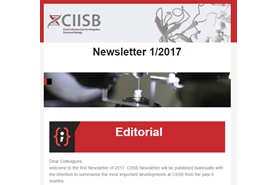23rd Central European NMR Users Meeting
Welcome to the 23rd Central European Users Meeting (13-15 September 2023, Faculty of Architecture - Prague, Czech Republic), a scientific event dedicated to NMR users and enthusiasts. This year's event promises to be engaging, informative, and productive, with a range of presentations, discussions, and networking opportunities.
The agenda for the event is now available on the website, where you can also find all the information you need to attend, including the registration form. Take a look!
